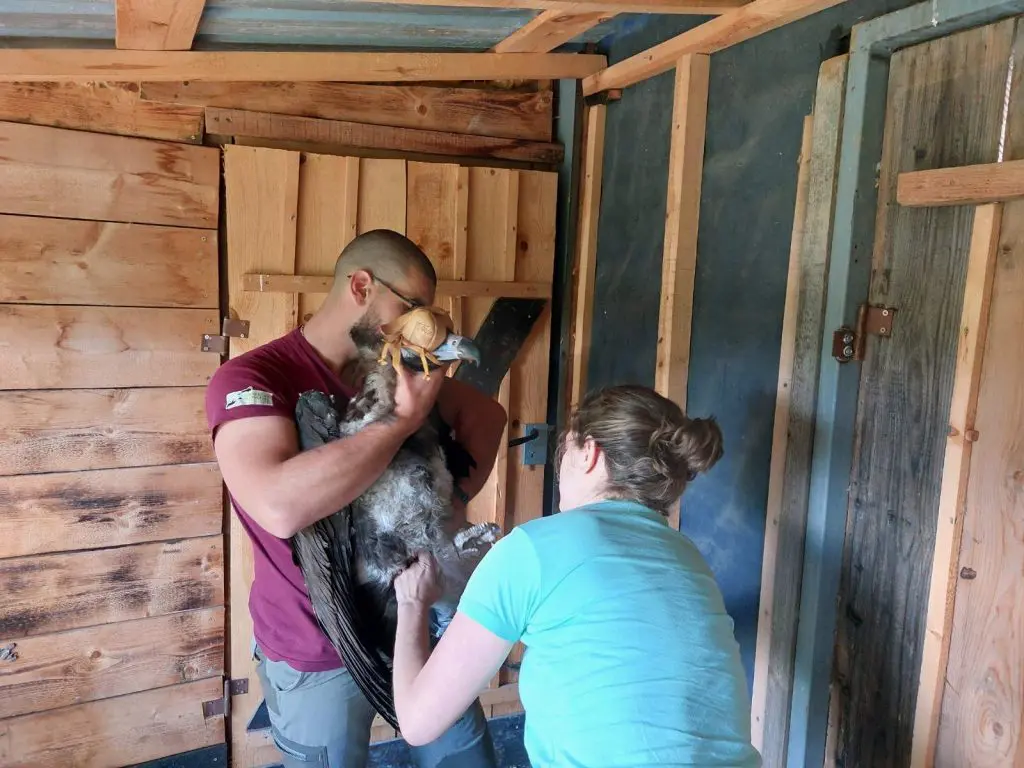
Two new artificial nests for the cinereous vulture have been constructed in the cross border Greek Bulgarian Eastern Rhodope mountains by the team of the Bulgarian Society for the Protection of Birds (BSPB) bringing the total now to 12.
Cinereous vultures in the Balkans

The last remaining population of the cinereous vulture is in the Dadia National Park in the eastern Rhodope Mountains in Greece with around 30 pairs. In Bulgaria the cinereous vulture have been extinct as a breeding species since 1993, efforts to reintroduce the bird to the country began with the release of three captive-bred birds earlier this year as part of the Vulture Back to LIFE conservation project.
Creating nests
The team at BSPB are creating around 20 artificial nests as part of the LIFE Re-Vulture project and so far have built 12 in the cross border Eastern Rhodopes with the aim of attracting breeding pairs from the Greek population into the area. So far Five of the nests were built in the Krumovitsa Protected Zone and the other seven in the Byala Reka Protected Area.
“At present, nests are not occupied, but as experience with other species of birds of prey shows, it takes time for birds to get used to the nests,” said Dobromir Dobrev from BSPB.
The nests are placed at a distance from each other to resemble as many natural colony as possible and thus increase the attractiveness of the place where they are placed. Using the different features of topographical features, vultures’ preferences and forest information the nests are created in areas that are closets or identical to the ecological requirements of the species.
The constructions are impressive in size. For the base, a platform with a diameter of 1.5 m is used, and the thickness can reach up to 0.5 m. They are made of natural materials – branches of trees, green moss, dry branches to make the nest as natural and attractive as possible.
LIFE Re-Vultures
Starting in 2016, the five-year LIFE RE-Vultures project was developed by Rewilding Europe, in collaboration with the Rewilding Rhodopes Foundation, the Bulgarian Society for the Protection of Birds and us here at the Vulture Conservation Foundation along with a range of other partners. The aim of the project is to support the recovery and further expansion of the cinereous and griffon vulture populations in the Rhodope Mountain by improving natural prey availability, and by reducing mortality through factors such as poaching, poisoning and collisions with power lines.



